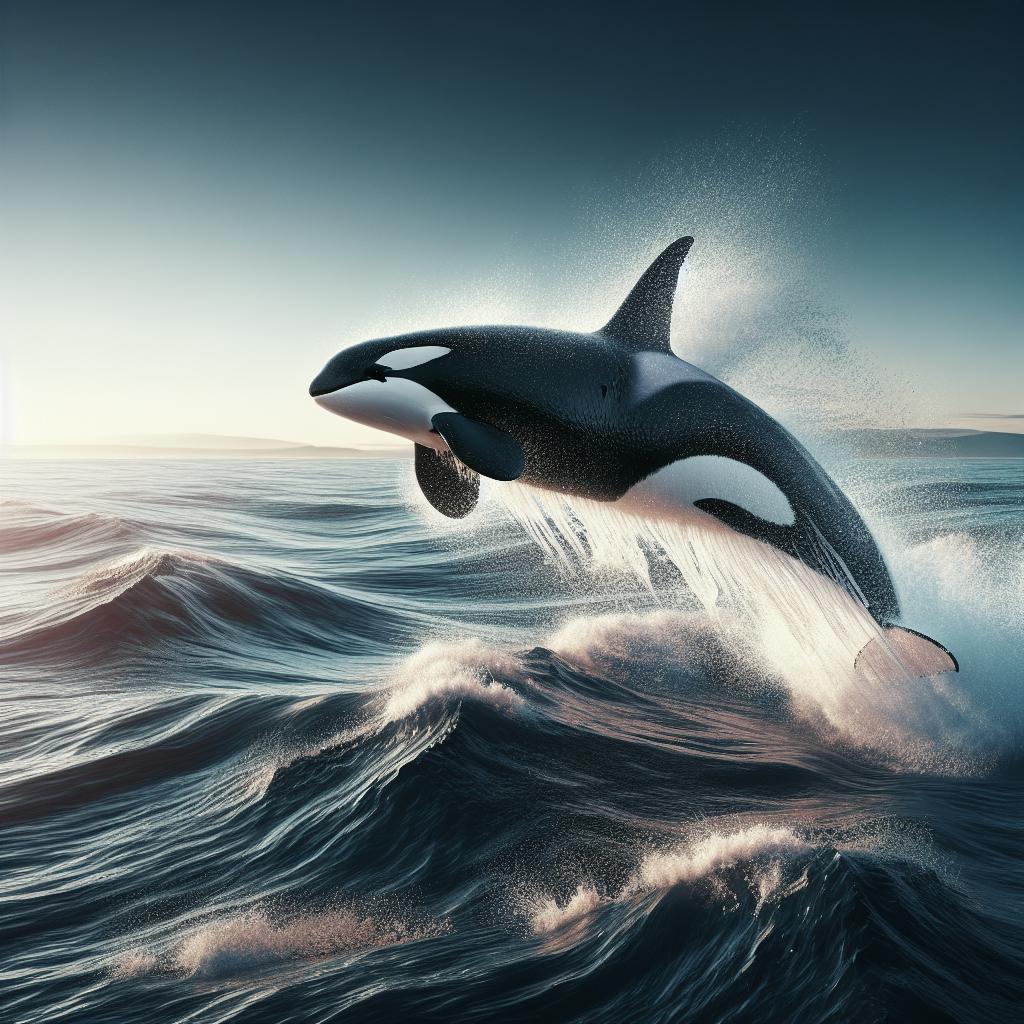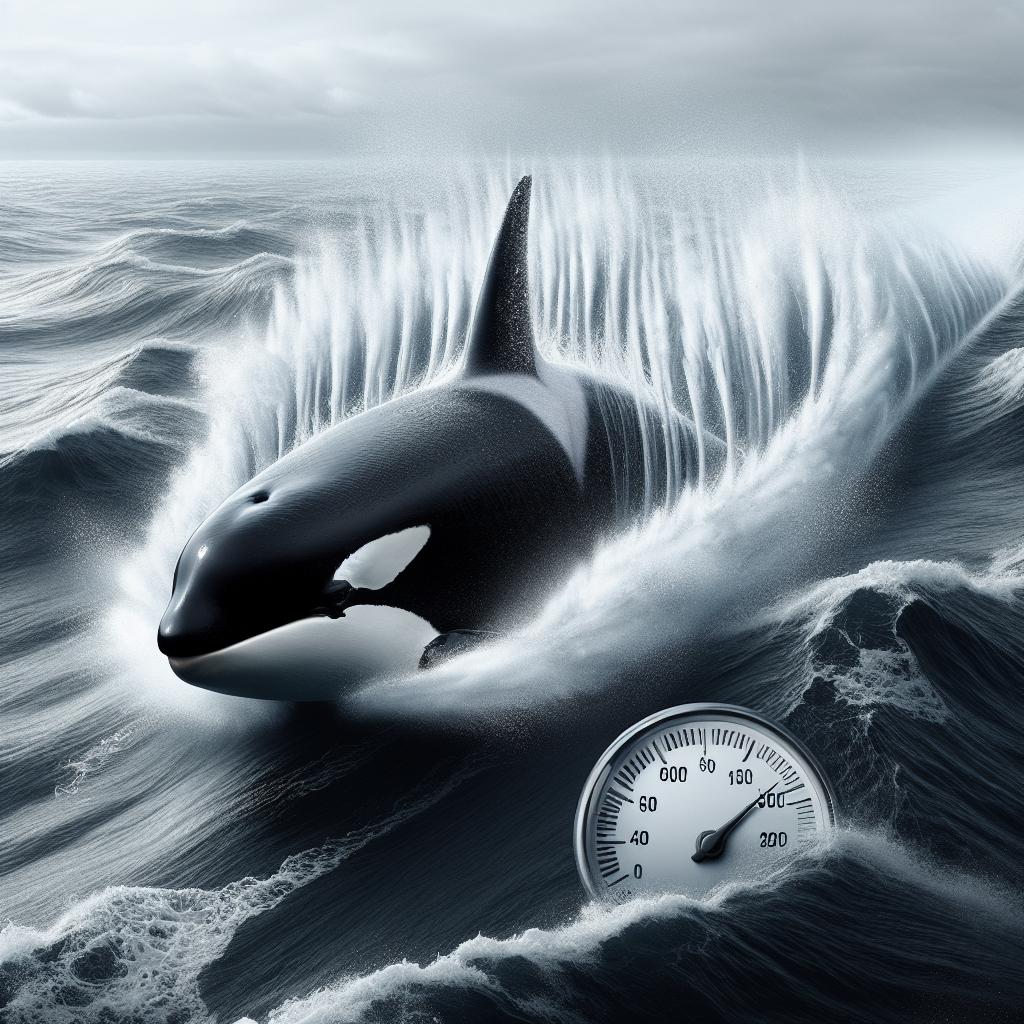Amazingly powerful and incredibly fast, orcas, also known as killer whales, are among the ocean’s top predators. Renowned for their speed and agility, these majestic creatures can cover great distances and hunt with precision. This blog post delves into the fascinating speeds of orcas in various contexts. We shall explore their typical cruising speeds as they traverse the oceans, their remarkable hunting speeds during high-energy pursuits, and what makes them so exceptionally streamlined. The unique fusiform shape of orcas plays a significant role in their hydrodynamic efficiency, enabling them to cut through the water effortlessly. By understanding these aspects, we gain insightful knowledge about one of the ocean’s most captivating inhabitants.
Cruising Speed
Orcas are known for their extraordinary ability to travel long distances across the ocean with relative ease. On average, orcas cruise at speeds of around 3 to 6 miles per hour (5 to 10 kilometers per hour). This leisurely pace allows them to cover vast stretches of the ocean while conserving energy. When migrating or exploring their home range, orcas can swim thousands of miles, maintained at this steady rate. While 3 to 6 mph may not seem incredibly fast compared to their top speeds, this cruising velocity is perfectly suited to their lifestyle. This steady pace enables social interactions within pods and the constant search for food, from fish to marine mammals. Additionally, young orcas keep up with their families, ensuring that the group remains cohesive and protects its members.
Hunting Speed
When it comes to hunting, orcas showcase their impressive speed and agility. An orca can reach speeds of up to 34 miles per hour (55 kilometers per hour) in short bursts when pursuing prey. This remarkable acceleration is essential for catching swift prey such as dolphins, seals, and even large whales. The ability to surge suddenly from a relaxed cruise to high-speed pursuit is a testament to the orcas’ robust musculature and streamlined form. An orca’s hunting techniques also rely heavily on cooperation within the pod. They often work together to herd schools of fish or outmaneuver agile sea creatures. The rapid acceleration and high-speed travel allow them to quickly surround and isolate their quarry, making escape virtually impossible for their intended prey. This combination of speed and teamwork makes orcas some of the most efficient predators in the ocean.
Incredibly Streamlined
Orcas are quintessential examples of marine life adapted for speed. One important aspect of their speed is their incredibly streamlined bodies, which minimize water resistance. Their hydrodynamic efficiency is achieved through sleek, smooth skin and a robust, torpedo-like body that effortlessly cuts through the water. This physical design plays a crucial role in their ability to travel at high speeds with minimal energy expenditure. Moreover, the lack of external protrusions like gills or other anatomical features that create drag enables orcas to maintain their streamlined profile. This smooth outline helps them propel forward with less resistance, allowing them to accelerate rapidly and maintain high speeds during hunting. Every aspect of their physique, from their rounded heads to their tapered tails, is engineered for aquatic efficiency.
Fusiform Shape
The fusiform shape characteristic of orcas is pivotal to their swimming prowess. This shape, broad in the middle and tapered at both ends, reduces drag and turbulence as the animal moves through the water. The front of the body, including the head and dorsal fin, cuts into the water cleanly, while the rear sections ensure that the water flows smoothly over and around the animal, reducing the wake behind it. Additionally, the muscular build of the orca, coupled with this fusiform shape, facilitates powerful thrusts with each movement of their caudal fin (tail fin). These thrusts generate the propulsion needed for both their consistent cruising speed and their exceptional bursts during hunting. This evolutionary adaptation grants them the unique ability to be both endurance swimmers and agile predators. Overall, understanding the orca’s speed, both in cruising and hunting contexts, provides valuable insight into their behavior and ecological role. Their streamlined bodies and fusiform shape epitomize evolutionary perfection for marine travel, rendering them not only fascinating but also formidable creatures of the sea.
See More Animals
Discover more about aquatic marvels and their unique adaptations by exploring our detailed accounts of various marine species and their behaviors.
Related Posts
- The Majesty of the Blue Whale
- Dolphin Strategies: Speed and Intelligence
- Shark Tales: The Speed Demons of the Deep
Popular Posts
- Top 10 Fastest Animals in the Ocean
- Understanding Marine Mammal Communication
- The Role of Predators in Ocean Ecosystems
Editor’s Picks
- The Impact of Climate Change on Marine Life
- Exploring the Deep Sea: New Discoveries
- Marine Conservation Efforts: Successes and Challenges
Future Prospects
We can expect to see further research into the biomechanics of orcas, uncovering more details about how these fascinating creatures have perfected their aquatic agility. Understanding their incredible speed and efficiency can inspire advancements in marine technology and conservation efforts to protect these magnificent animals.
| Aspect | Details |
|---|---|
| Cruising Speed | 3 to 6 miles per hour (5 to 10 kilometers per hour) |
| Hunting Speed | Up to 34 miles per hour (55 kilometers per hour) |
| Streamlined Design | Sleek, smooth skin and torpedo-like body for minimal water resistance |
| Fusiform Shape | Broad in the middle and tapered at both ends, reducing drag and turbulence |


